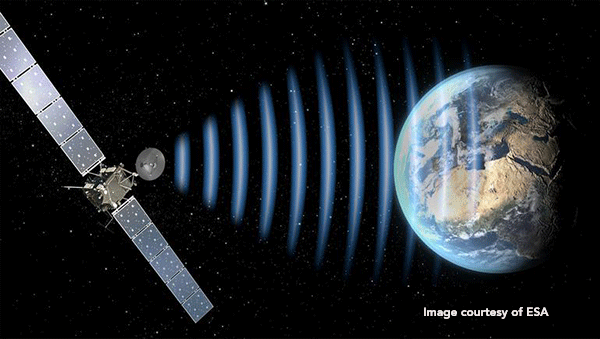Rosetta’s mission comes to an end

Today, Friday 30 September, the European Rosetta spacecraft will complete its mission with a controlled descent onto the surface of the comet 67P/Churyumov–Gerasimenko.
The mission will culminate with a descent towards a region of active pits on the comet’s ‘head’. The region, known as Ma’at, lies on the smaller of the two lobes of Comet 67P/Churyumov–Gerasimenko. It is home to several active pits more than 100 m in diameter and 50–60 m deep.
Rosetta will get its closest look yet at these fascinating structures: the spacecraft will target a point adjacent to a 130 m-wide, well-defined pit that the mission team has informally named Deir el-Medina, after a structure with a similar appearance in an ancient Egyptian town of the same name.
Like the artefacts found inside the Egyptian archaelogical site that tell historians about life in that town, the comet’s pit contains clues to the geological history of the region. Rosetta will target a point very close to Deir el-Medina, within an ellipse about 700 x 500 m.
Since 9 August, Rosetta has been flying elliptical orbits that bring it progressively closer to the comet. Since last 24 September, when the flyover was completed, a short series of maneuvers has been performed to line Rosetta up with the target impact site. On its closest flyby, Rosetta came within 1 km of the surface, a distance never reached before.
Today all spacecraft operations will therefore cease; from this moment on, teams will begin to concentrate solely on scientific questions.
GMV has played a key role in the Rosetta mission from the word go. Both the entry into orbit and the landing of a soft-touchdown lander (Philae) on comet 67P/Churyumov-Gerasimenko were controlled from Earth by a team of engineers, with a crucial role being played by GMV. The company sent some of its staff to the Rosetta Science Operations Centre within the European Space Agency’s European Space Astronomy Centre (ESAC/ESA) in Villafranca del Castillo (Madrid), to ESA’s European Space Operations Centre (ESOC) in Darmstadt, Germany, and to the Control Center of the French Space Agency (Centre National d'Etudes Spatiales: CNES) in Toulouse, France.
GMV also played a key role in the initial mission analysis stage since years before the actual launch. Among other activities it also participated in the planning of scientific operations, planning control of three instruments and preparation of the operations for the main mission phase (the comet phase).
GMV personnel posted to France performed maintenance of the calculation tools used by CNES’s control center to calculate necessary illumination and visibility criteria to decide the comet landing point and also the possible descent trajectories of the Philae soft touchdown lander.
GMV’s personnel posted to Germany, for their part, have been participating since 2004 in flight dynamics operations, specifically trajectory control and generation of the necessary commands for controlling the probe’s orbit and attitude. For comet approach operations GMV’s flight dynamics team are carrying out additional tasks: design of approach-, orbit- and descent-trajectories; processing of images from Rosetta’s onboard cameras and estimating the comet’s navigation-affecting characteristics. GMV’s personnel will be carrying out this series of activities until right up to the end of the spacecraft’s operations.